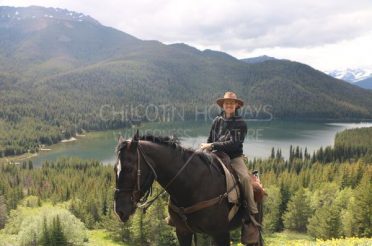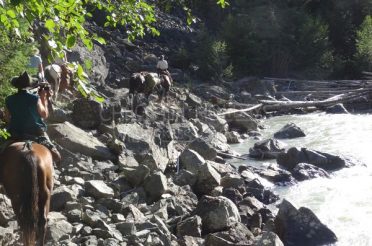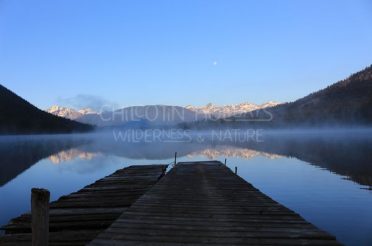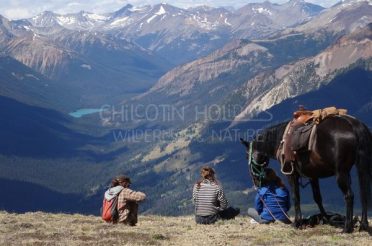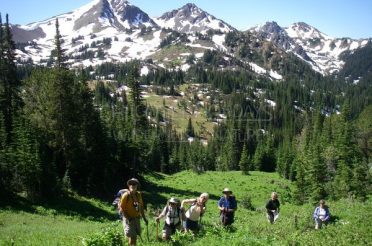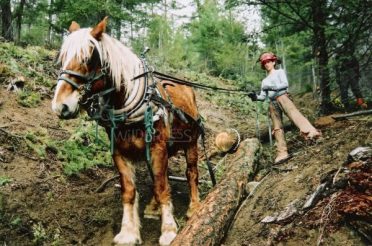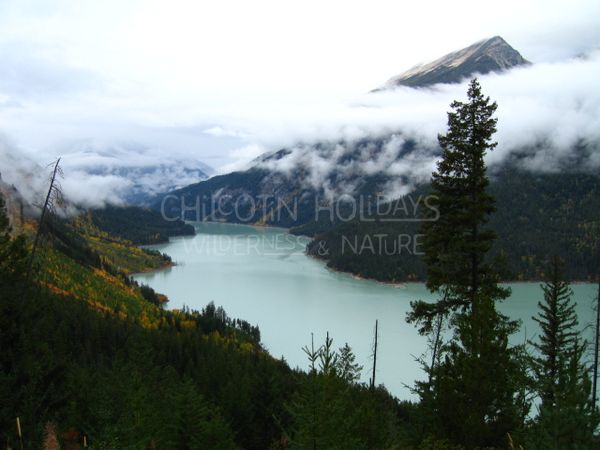
Unplugging from Technology
Take a moment to imagine a beautiful lush forest—an evergreen forest—with lots of proud pines and a gentle winding path that goes through the middle of this grove. On the other side of the trees is an open meadow filled with bright yellow wildflowers. The sun is shining with a slight breeze. The mountains stand tall in the distance. The world is calm and serene. Then your partner walks up from behind, talking loudly on their cell phone. They are not paying attention to the scenery or the beautiful environment they are in and are disturbing the overall experience. This is what mixing unnecessary technology and nature looks like.
Technology causes some significant distractions while in the wilderness. Over-stimulation of the prefrontal cortex, which is the part of the brain responsible for higher-order thinking, breaks down the brain’s ability to process new information and shortens the attention span. This over-stimulation is caused by activities that are considered normal in Western-culture. Activities such as answering emails right away, reacting to notifications on the phone, and constantly updating social media are all prioritized and normalized as daily tasks. This continuous over-stimulation then manifests into a form of addiction(Laskin, 2018). Essentially, the mind becomes unable to sit still for long amounts of time and, therefore, becomes restless without that constant input from flashy, instant, attention-grabbing activities like scrolling through Instagram or Snapchatting. The Western-culture has become technology dependent.
Children who are handed smartphones and tablets at a young age are at much higher risk of suffering from mental illnesses such as anxiety and depression (Laskin 2018). Their brains are not fully developed and, because of this, are not equipped to handle the influx of dopamine –the chemical that causes pleasure, which comes from common activities associated with this form of technology. As a response to this new disorder of technology addiction, there has been an increase in parents seeking wilderness therapy programs to help their children disconnect from technology and reconnect with their place in the outside world (Laskin, 2018).
Being integrated into the wilderness allows the prefrontal cortex region of the brain to slow down and recuperate. “Time in nature—sans cell phone– [is] a powerful antidote to the constant distraction of our digital lives” according to Neuroscientist David Strayer. Much like a strained muscle, after some much needed rest, it can come back performing better than before; restoring attention, activating creativity, and reducing anxiety (Gregorie, 2016). When the prefrontal cortex is not overly engaged with continuous activities, the brains default mode network to take over. This is where flashes of insights happen, when one is not focused on anything specific, but instead allows the mind to wander. Among the trees and the mountain tops, it is easy for one to sit and let the mind wander as one takes in the beauty they are surrounded by.
Bringing unnecessary technology into the wilderness hinders this process. When one is distracted by tasks or objects, such as social media or gaming devices, it takes away from that vital connection with nature. The over-stimulation of the prefrontal cortex continues and one is unable to restore focus or the ability to multitask. The human mind cannot process information from two different sources at once. If an individual is distracted by technology, they cannot fully take in the present opportunities they have. Bringing in technology such as smartphones into the wilderness is hindering because people then are bringing with them a virtual world, a different world. Parts of them are present in the wild while other parts are in the virtual world, either mentally or physically. This takes away part of the possibility to fully be present and fully experience nature, but instead only experience parts of it. This places one in a bubble, which makes a meaningful connection with nature near impossible.
Although, technology is not the villain in this story. Technology has allowed us to reach amazing heights in relation to outdoor recreation. The invention of stronger canoes allow whitewater rapids to be better navigated, GPS locators allow people to venture further into the wilderness without fear of being lost, and bear canisters allow individuals to still bring their favorite snacks into the bush without having to share. All of these advancements, and thousands more, have given people the ability to experience the wonder that is the great outdoors safely and comfortably, even in some of the worst conditions. It is all a matter of knowing which tools are appropriate to use in each situation.
Now, imagine the same scene as before. The pines are still standing tall in the lush forest, with the soft path winding through the trees. The flowers are still vibrant in the meadow, soaking up the sun and dancing in the breeze. The world is tranquil and quiet; no cell phones, no tablets, just the beautiful mountains and the company of good people.
Danika
——————————–
If you would like to read more about this topic please refer to:
- “The Tech Generation Goes to Wilderness Therapy” by Josh Laskin
Laskin, Josh. “The Tech Generation Desperately Needs Wilderness Therapy.”Outside Online, Outside Magazine, 11 Sept. 2018, - “The New Science of the Creative Brain on Nature” by Carolyn Gregoire
Gregoire, Carolyn. “The New Science of the Creative Brain on Nature.”Outside Online, Outside Magazine, 12 Dec. 2016,

